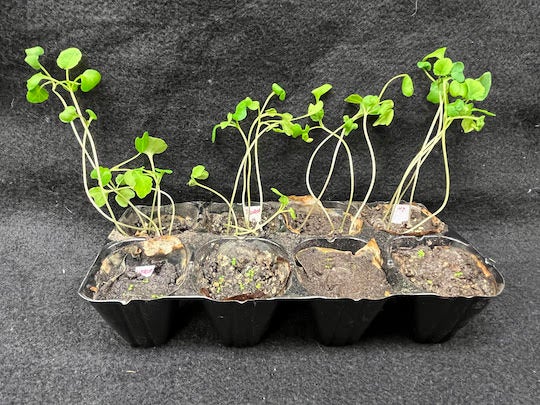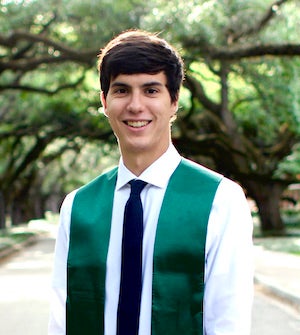Rice Researchers Contribute to Development of High-Temperature Process for Rapid Removal of Heavy Metals and Organic Contaminants
Filtration systems are designed to capture multiple harmful substances from water or air simultaneously, but pollutants in soil can only be tackled individually or a few at a time ⎯ at least for now.

A method developed by Rice University scientists and collaborators at the United States Army Engineer Research and Development Center (ERDC) could help turn soil remediation processes from piecemeal to wholesale.
A team of Rice scientists led by chemist James Tour and researchers from the geotechnical structures and environmental engineering branches of the ERDC showed that mixing polluted soil with nontoxic, carbon-rich compounds that propel electrical current, such as biochar, then zapping the mix with short bursts of electricity flushes out both organic pollutants and heavy metals without using water or generating waste.
According to a study published in Nature Communications, the electrical pulses bring soil temperature up to 1000-3000 degrees Celsius as needed (1832-5432 Fahrenheit) in seconds, turning organic contaminants into nontoxic graphite minerals and toxic heavy metals into vapor collected via extraction pipes. Moreover, the process is beneficial to soil fertility, with experiments showing germination rates improve by 20-30% in remediated soil.
“Our high-temperature electrothermal process can remove multiple pollutants simultaneously,” said lead author Bing Deng, a postdoctoral research associate in the Tour lab. “This newly established method, which we called high-temperature electrothermal process (HET), is based on the flash Joule heating technique we developed a few years ago. It is the first time that direct electric heating has been used for soil remediation.”
Heavy metals like lead, arsenic, zinc, cobalt, copper, mercury and nickel and organic contaminants like pesticides and microplastics are the main pollutants in soil. In addition to anthropogenic activities, natural events like earthquakes and flooding can also drive soil contamination: Toxic ash released by wildfires like the ones that devastated Hawaii in August or any potential industrial waste released by thawing permafrost in the Arctic could contaminate vast areas of soil, calling for large-scale decontamination protocols.
However, current methods of removing pollutants from soil are time-consuming, costly and logistically challenging. Some decontamination techniques, such as surfactant leaching, also generate secondary waste streams and use up significant amounts of water and/or electricity. Finding better ways to decontaminate soil is critical for improved disaster readiness, making it a national security priority, Deng said.

“This method is ultrafast, which can be really useful in addressing emergency situations,” Deng added.
“Soil remediation technologies normally target only one or two heavy metals at a time, and often they’re not very successful or function at a much slower rate than electrothermal heating,” said Mine Ucak-Astarlioglu, an ERDC research chemist. “This method is very rapid, water-free and handles multiple pollutants in soil. Flash Joule heating is an incredibly promising technique in critical metals recovery from wastes and heavy metals removal for remediation.”
Chris Griggs, an ERDC senior research physical scientist, said that, currently, polluted soil can either be dug up and hauled away from populated sites ⎯ an option he calls a “logistical nightmare” ⎯ or it can be treated on site to prevent toxic elements from migrating into the surrounding air, water or food supply.
“Certain contaminants might be fine ⎯ they’re not going to move. Other ones might migrate to groundwater and drinking water sources. Some could end up tainting crops, where you could have toxic heavy metals being drawn up through the roots of plants, etc.,” Griggs said. “Being able to regenerate the soil and put it right back where it was, that’s a huge advantage over existing technologies that are out there.”
A surprising effect of the rapid high-temperature treatment is that it leaves soil particle size and overall mineral composition relatively unchanged. In fact, the process improves the water infiltration rate and increases the pool of available nutrients, making the soil more fertile.
“It was surprising to us that we do not damage the soil in the process,” said Tour, Rice’s T.T. and W.F. Chao Professor of Chemistry and a professor of materials science and nanoengineering. “Plants actually like it more, because of the minerals that get freed up in the thermal cycling.”

Yi Cheng, a Rice postdoctoral researcher and lead co-author who helped with the characterization of soil properties, said the process works equally well on wet soil.
“Our process is economical and environmentally friendly,” Cheng added.
The study includes a lifecycle analysis that shows the process is scalable and promises to be more energy-efficient and cost-effective than traditional soil remediation practices like soil washing or thermal desorption.
“We developed two implementation models for both off- and on-site deployment, and we are looking forward to taking this process to the next stage ⎯ field testing,” Deng said.
The collaboration between Rice and ERDC could help the technology transition from the proof-of-concept stage to real-world practice.
“When it comes to the techno-economics and scalability of the process, we can lift a little bit heavier and go a little bit bigger than a university could, but the discovery side of research is where universities excel,” Griggs said. “It’s a good partnership.”

“It’s a technical partnership, an educational partnership, and it also provides job opportunities,” Ucak-Astarlioglu said. “It’s a win-win situation for all university partners involved.”
Rice alumnus Robert Carter is also a lead co-author on the study. Other authors include Rice graduate students Lucas Eddy and Debadrita Jana; postdoctoral researchers Yuan Liu and Shichen Xu; research scientists Xiaodong Gao and Carter Kittrell; undergraduate student Khalil JeBailey; Rice doctoral alumni Duy Xuan Luong and Kevin Wyss; Mark Torres, assistant professor of Earth, environmental and planetary sciences; and Janet Braam, professor of biosciences and associate dean for strategic initiatives.

